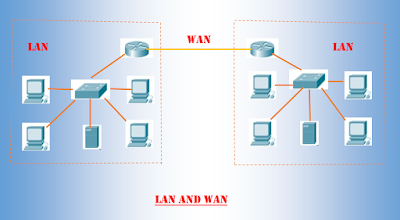
LAN and WAN
LAN (Local Area Network)
LAN is a computer network that interconnects computers within a limited area such as a residence, school, laboratory, university campus or office building and has its network equipment and interconnects locally managed.
WAN (Wide Area Network)
WAN is the network that is interconnected by two or more LANs. WAN is not only defined by a larger geographic distance, but also generally defined by leased telecommunication circuits.
